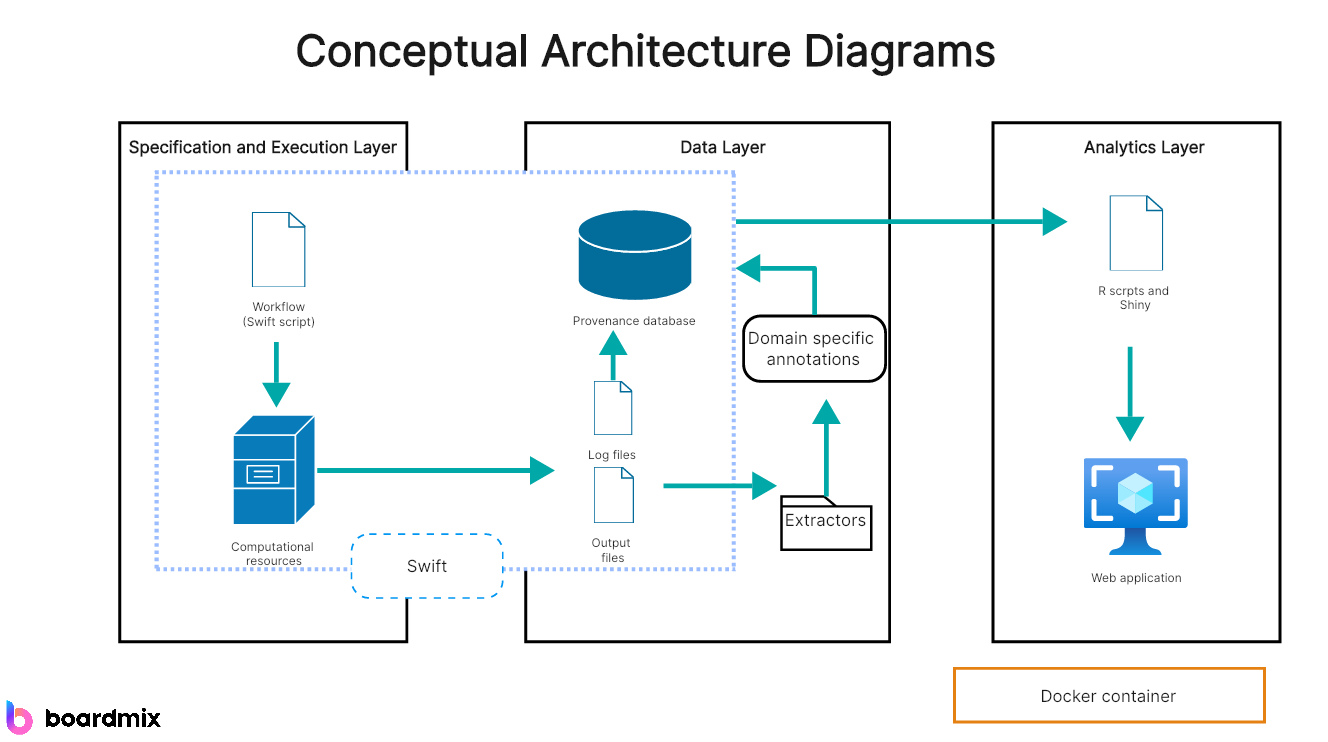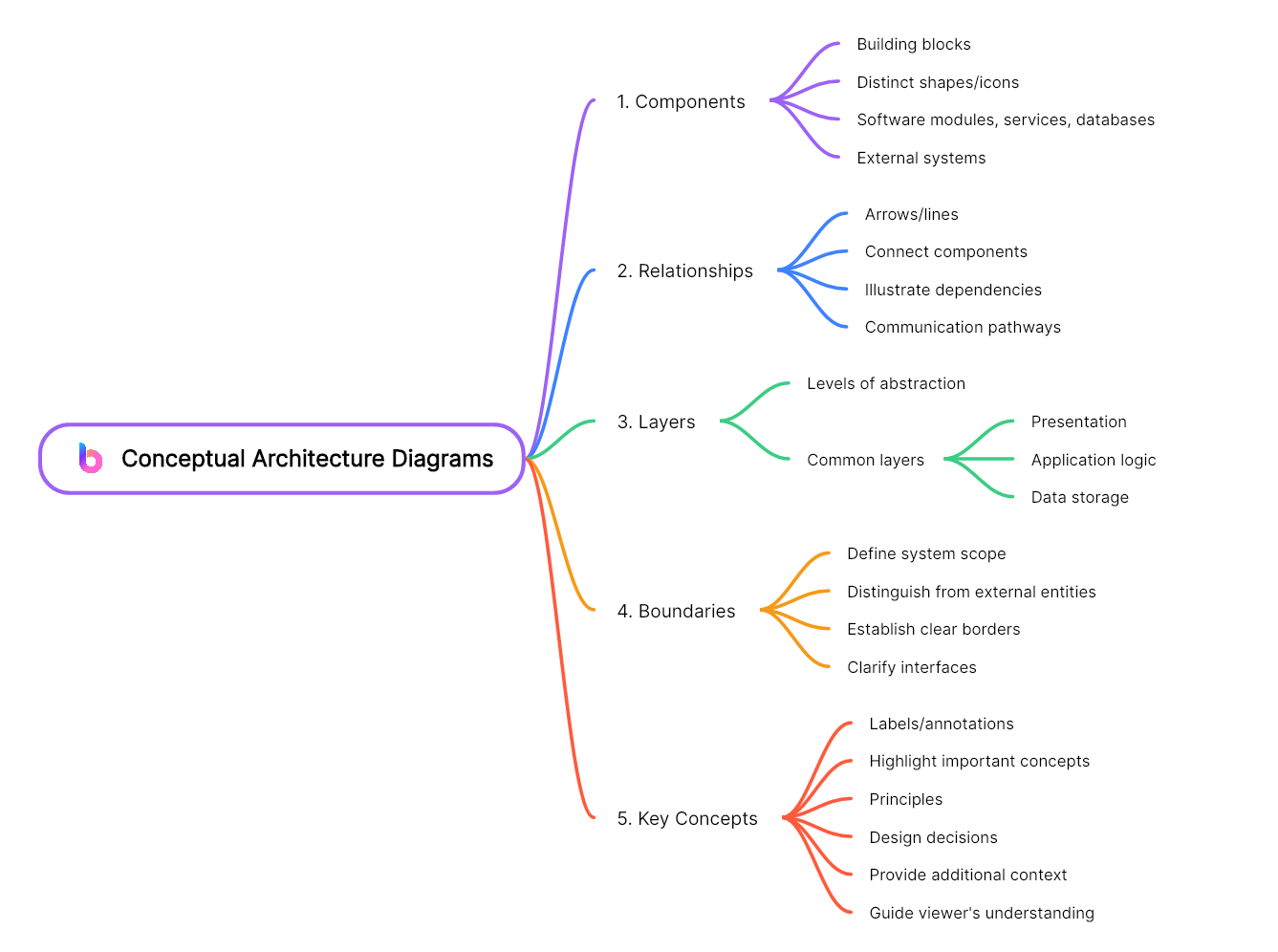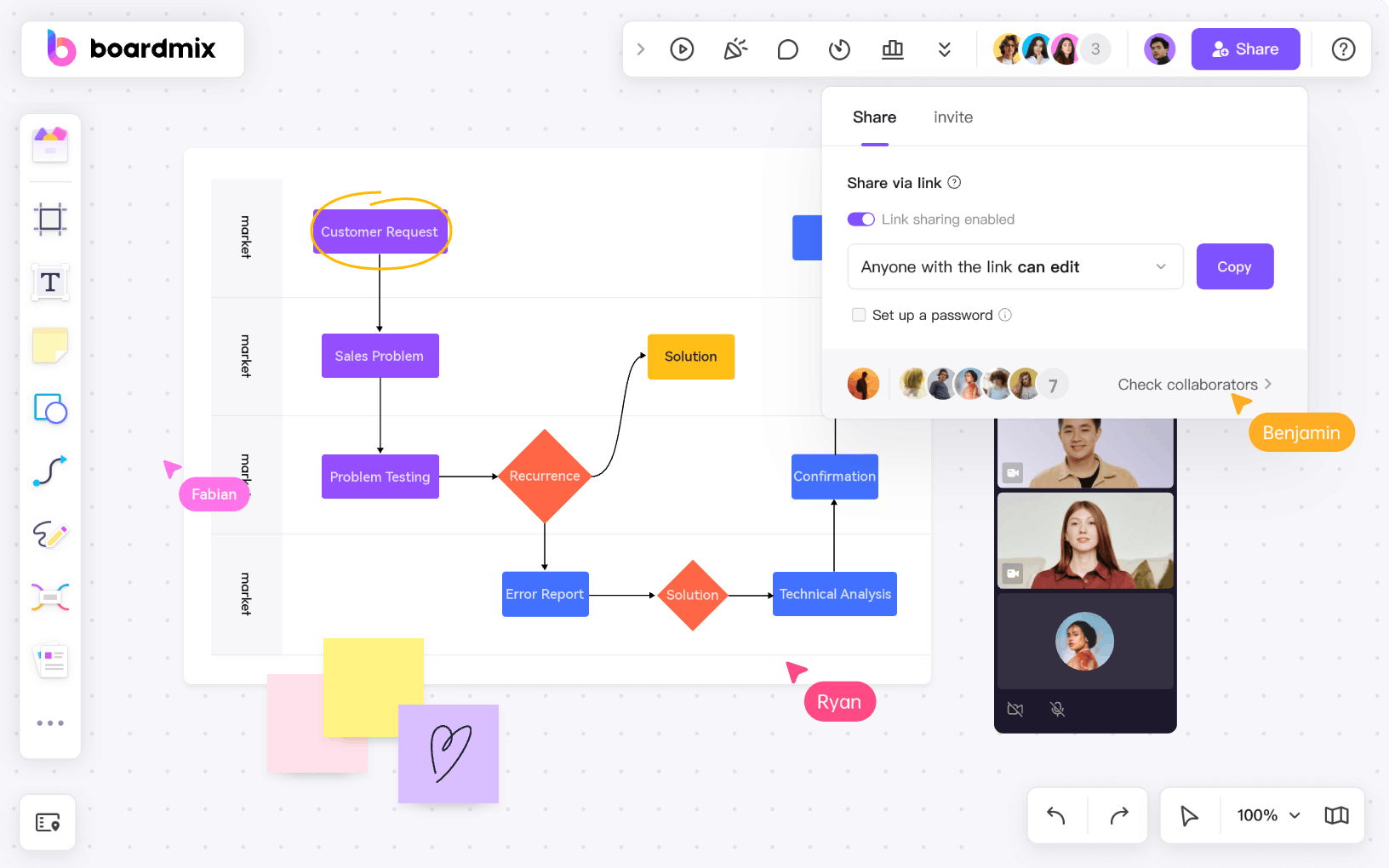In the realm of software development and system design, conceptual architecture diagrams play a pivotal role in visualizing and communicating the high-level structure and components of a system. These diagrams serve as a blueprint for understanding the fundamental concepts and relationships that form the foundation of a complex system. In this article, we will delve into the key aspects of conceptual architecture diagrams, exploring their importance, common elements, and best practices for creating effective representations of complex systems.
Part 1. What is a Conceptual Architecture Diagram?
A conceptual architecture diagram is a graphical representation that illustrates the high-level structure, key components, and interactions of a system or application. Unlike detailed technical diagrams, conceptual architecture diagrams focus on conveying the essential concepts and relationships without delving into implementation specifics. These architecture diagrams are crucial for aligning stakeholders, such as developers, architects, and non-technical decision-makers, by providing a shared understanding of the system's overarching design.

Part 2. Key Elements of Conceptual Architecture Diagrams
There are 5 key elements of conceptual architecture diagrams, they are:

1. Components:
- The building blocks of the system, represented by distinct shapes or icons.
- Components can include software modules, services, databases, and external systems.
2. Relationships:
- Arrows or lines connecting components to illustrate dependencies and communication pathways.
- Relationships showcase how components interact and share information within the system.
3. Layers:
- Conceptual architecture diagrams often incorporate layers to represent different levels of abstraction.
- Common layers include presentation, application logic, and data storage.
4. Boundaries:
- Boundaries define the scope of the system and distinguish it from external entities.
- They help to establish a clear understanding of the system's borders and interfaces.
5. Key Concepts:
- Labels or annotations to highlight important concepts, principles, or design decisions.
- Key concepts provide additional context and guide the viewer's understanding of the system.
Part 3. Importance of Conceptual Architecture Diagrams
The importance of Conceptual Architecture Diagrams lies in their ability to:
1. Communication:
- Facilitates communication among stakeholders with varying levels of technical expertise.
- Bridges the gap between technical and non-technical audiences, fostering a shared understanding.
2. Decision-Making:
- Aids in decision-making processes by visualizing the high-level design choices and trade-offs.
- Enables informed discussions about architecture and design principles.
3. Documentation:
- Serves as a valuable piece of documentation for current and future development teams.
- Provides a reference point for understanding the system's architecture without delving into detailed technical documentation.
Part 4. Best Practices for Creating Conceptual Architecture Diagrams
Following these best practices ensures that Conceptual Architecture Diagrams effectively convey essential information and facilitate communication among diverse stakeholders.
Some best practices include:
1. Simplicity:
- Keep the diagram simple and focused on high-level concepts.
- Avoid unnecessary details that may overwhelm viewers.
2. Consistency:
- Use consistent notation and styling throughout the diagram.
- Ensure that symbols and conventions are universally understood by the intended audience.
3. Clarity:
- Prioritize clarity in the arrangement of components and relationships.
- Arrange components in a logical manner that reflects their relationships and dependencies.
4. Contextualization:
- Provide contextual information, such as system boundaries and key concepts, to enhance understanding.
- Include legends or explanations for symbols and labels used in the diagram.
Part 5. When to Use Conceptual Architecture Diagram?
Conceptual architecture diagrams are beneficial in various situations and stages of a project. Here are some key scenarios when using conceptual architecture diagrams is particularly advantageous:
- Project Kickoff: Use conceptual diagrams to introduce the high-level architecture to stakeholders at the beginning of a project, setting a common understanding.
- Requirement Analysis: Aid in gathering and understanding requirements by providing a visual representation of the proposed system's structure.
- Design Discussions: Facilitate discussions among development teams and stakeholders during the design phase to ensure alignment on architectural decisions.
- Communication with Non-Technical Stakeholders: Employ conceptual diagrams to convey system architecture to non-technical stakeholders, such as executives, clients, or marketing teams.
- Decision-Making Processes: Assist in decision-making by visually representing design choices, alternatives, and their implications.
- Documentation: Serve as a part of documentation, offering a high-level overview for reference by current and future development teams.
- Onboarding New Team Members: Help new team members quickly grasp the fundamental architecture and components of a system.
- System Overhauls or Upgrades: Use conceptual architecture diagrams when planning significant changes to a system to visualize the impact on the overall architecture.
- Educational Purposes: Support educational initiatives or training programs by providing a clear, visual representation of system architecture concepts.
- Alignment of Stakeholders: Foster alignment and consensus among stakeholders with diverse backgrounds and roles by presenting a shared understanding of the system's architecture.
In essence, conceptual architecture diagrams are versatile tools that find application throughout the software development lifecycle, from the initial stages of planning and design to ongoing communication and documentation. They prove especially valuable in situations where a high-level, abstract representation of the system is needed for effective communication and decision-making.
Part 6. How to Create a Conceptual Architecture Diagram with Boardmix?
Boardmix is a cutting-edge online whiteboard tool designed to revolutionize the way you visualize and share ideas. With an array of drawing templates, Boardmix allows you to effortlessly create Conceptual Architecture Diagrams, fostering collaboration and innovation. Whether you're brainstorming new ideas, mapping out strategies, or designing complex systems, Boardmix provides a flexible canvas that can adapt to your needs. Unlike traditional whiteboards, Boardmix enables real-time collaboration from anywhere in the world, breaking down geographical barriers and enhancing productivity.

Step-by-step guide to create a conceptual diagram with Boardmix:
Step 1. Sign up/in to Boardmix.

Step 2. Click the + icon on the Home page to create a new board. Then form the pop-up window to choose a suitable template. You can also start from a scratch.

Step 3. Apply the template and you can then fill in the template with your own case. With the toolbar, you can change everything on the template.

Step 4. Click the share button to invite your teammates or colleagues to collaborate with you.

Conclusion
Conceptual architecture diagrams are powerful tools for conveying the fundamental design principles of a system. By providing a visual representation of key components and relationships, these diagrams enable effective communication, support decision-making processes, and serve as valuable documentation for development teams. Embracing best practices in creating conceptual architecture diagrams ensures that they become a clear and concise means of conveying the essence of complex systems to diverse audiences.
And the architecture diagramming tool Boardmix will streamline the process you make the conceptual architecture diagrams. Don’t hesitate to try it for free now!








